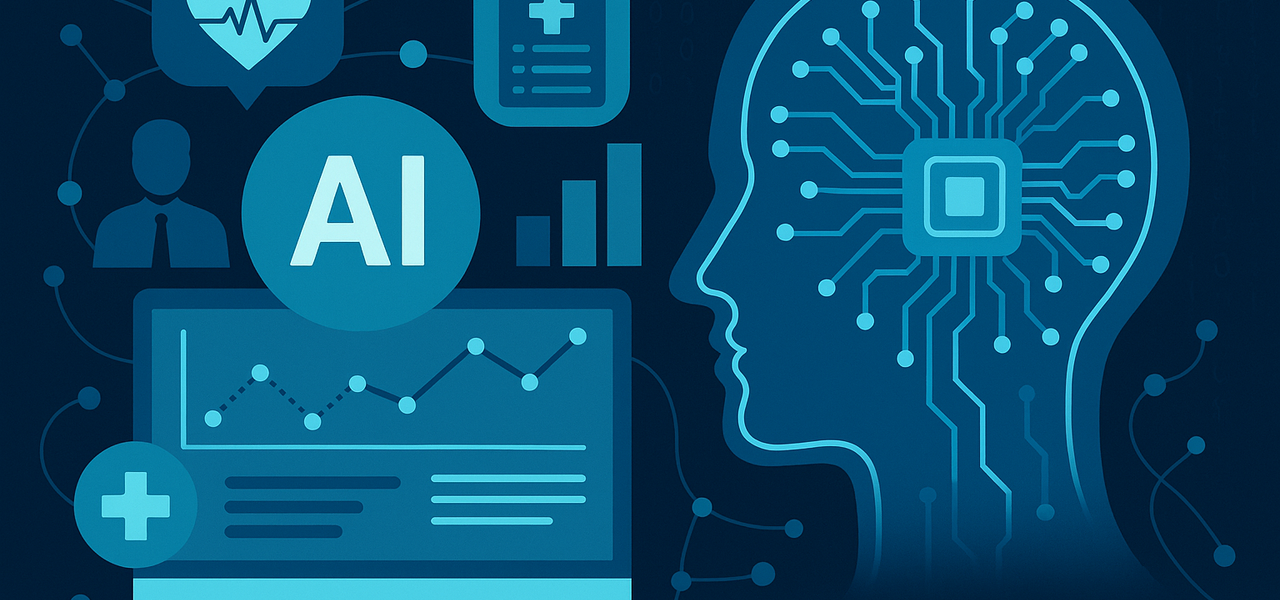Artificial intelligence (AI) has long been hailed as the future of healthcare. But what does it actually look like in public health practice today—and how is it shaping the roles and skills public health professionals need right now?
Over the past five years, the UK has made significant strides in applying AI and data science to solve real-world public health problems. From forecasting A&E demand to supporting obesity prevention and outbreak detection, AI is now moving beyond buzzwords and into deployment.
High-Intensity Users: Predicting Who Needs Help Most
One of the clearest use cases of AI in public health is in managing “high-intensity users” of A&E departments—patients who attend emergency care five or more times per year.
In 2023, NHS trusts piloting AI-driven prediction models successfully identified patients at risk of frequent hospital use. These models, based on factors like medical history, social vulnerability, and past admissions, enabled care teams to proactively engage these individuals.
📊 The result? In trial sites, A&E visits fell by over 50% among these high-intensity users.
(Source: NHS AI Lab, 2023)
Combined with personalised care plans—including social prescribing, housing support, and mental health interventions—this approach demonstrated the power of AI when paired with human judgment.
Tackling Obesity: Can AI Nudge Us Towards Better Health?
AI is also being tested to support population-level lifestyle change. One NHS initiative involved using machine learning algorithms to identify communities with the highest risk of childhood obesity—factoring in not just BMI trends, but socioeconomic data, access to green space, and food environment metrics.
This allowed public health teams to target resources more precisely: rolling out school-based programmes, community cooking classes, and digital coaching where they’d have the greatest impact.
While long-term outcomes are still being evaluated, early findings suggest better uptake and engagement when interventions are hyper-local and data-informed.
Surveillance and Early Warning
AI is increasingly used in disease surveillance, with tools scanning social media, Google search trends, and even wastewater to identify early signs of infectious disease outbreaks.
During the COVID-19 pandemic, platforms using AI to analyse mobility data helped estimate transmission risk and inform local lockdown decisions. More recently, public health bodies have explored using natural language processing (NLP) to review GP notes for signals of rising flu or Strep A cases, enabling faster response.
📈 As infectious threats like measles, flu, and mpox re-emerge, AI could be crucial in catching outbreaks before they spread.
The Public Health Workforce Implications
These developments aren’t just technical milestones—they’re transforming what it means to work in public health.
Here’s how:
- Data fluency is now essential: Public health analysts are increasingly expected to use tools like Python, R, or Power BI to interpret large datasets and model health trends.
- AI ethics is part of the job: Ensuring that models are fair, transparent, and representative of all populations (not just those with the most data) is becoming a core responsibility.
- Cross-functional collaboration is key: Public health teams are working more closely with data scientists, engineers, and private sector partners to co-develop solutions.
- New roles are emerging: Jobs like Digital Epidemiologist, Health Data Scientist, and Public Health Tech Lead are being created across NHS trusts, local authorities, and agencies like UKHSA.
Caution: Mind the Gap
Despite the promise, there are real risks if AI is rolled out without care:
- Bias and equity: Algorithms can reinforce existing inequalities if trained on incomplete or skewed data.
- Digital exclusion: Not all communities have equal access to digital tools, potentially widening health disparities.
- Data privacy concerns: Public trust in health data use must be earned through transparency and strong governance.
Looking Ahead
The UK government’s Data Saves Lives strategy and the NHS Long Term Workforce Plan both highlight the central role that data and AI will play in future health services. For public health professionals, this represents an opportunity to lead innovation, not just react to it.
💼 Whether you're a health visitor, an analyst, or a policy officer, the ability to understand and apply digital tools will be key to advancing your career—and your impact.
Want to Work in Data-Driven Public Health?
Visit our Data & Analytics jobs page to explore the latest roles in public health intelligence, epidemiology, and digital transformation. You don’t need to be a coder—just curious, collaborative, and ready to learn.

